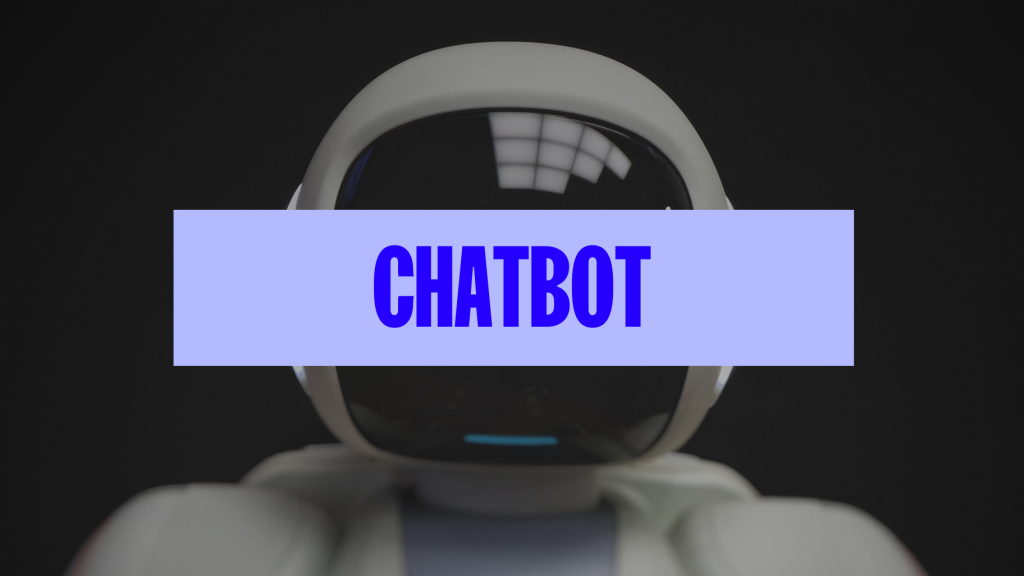Generative artificial intelligence (GenAI) has revolutionized chatbots. These nifty tools now excel in handling customer inquiries, and by 2027, they’re poised to become the main customer service method for many companies. Beyond answering questions, GenAI chatbots create content, summarize report metrics, and offer tailored guidance throughout a customer’s online journey.
This article explores the capabilities of AI chatbots today and guides you in choosing the best one for your business.



What is an AI chatbot?
An artificial intelligence (AI) chatbot is software that simulates human-like conversations using a process called natural language processing (NLP).
When a user inputs a question or statement, the chatbot employs NLP to comprehend what the user means, processes this information, and then crafts a suitable reply.
→ Click Here to Launch Your Online Business with Shopify
AI chatbots are continually learning from their conversations. As time goes on, they fine-tune their ability to understand different patterns and situations. This learning makes them versatile for various applications, like analyzing customer emotions or anticipating what a website visitor might be seeking.
How AI chatbots work?
AI chatbots rely on large language models (LLMs) to understand context and generate coherent responses. LLMs’ ability to pre-train on large datasets makes them suitable for a wide range of language-related tasks. Examples of LLMs include Google’s Language Model for Dialogue Applications (LaMDA) and OpenAI’s Generative Pretrained Transformer (GPT).
Compared to their rule-based predecessors, AI chatbots can converse with human users in a more natural and comprehensive manner. You can also train them on specific datasets to improve their ability to perform designated tasks.
Best AI chatbots for your business
1. ChatGPT
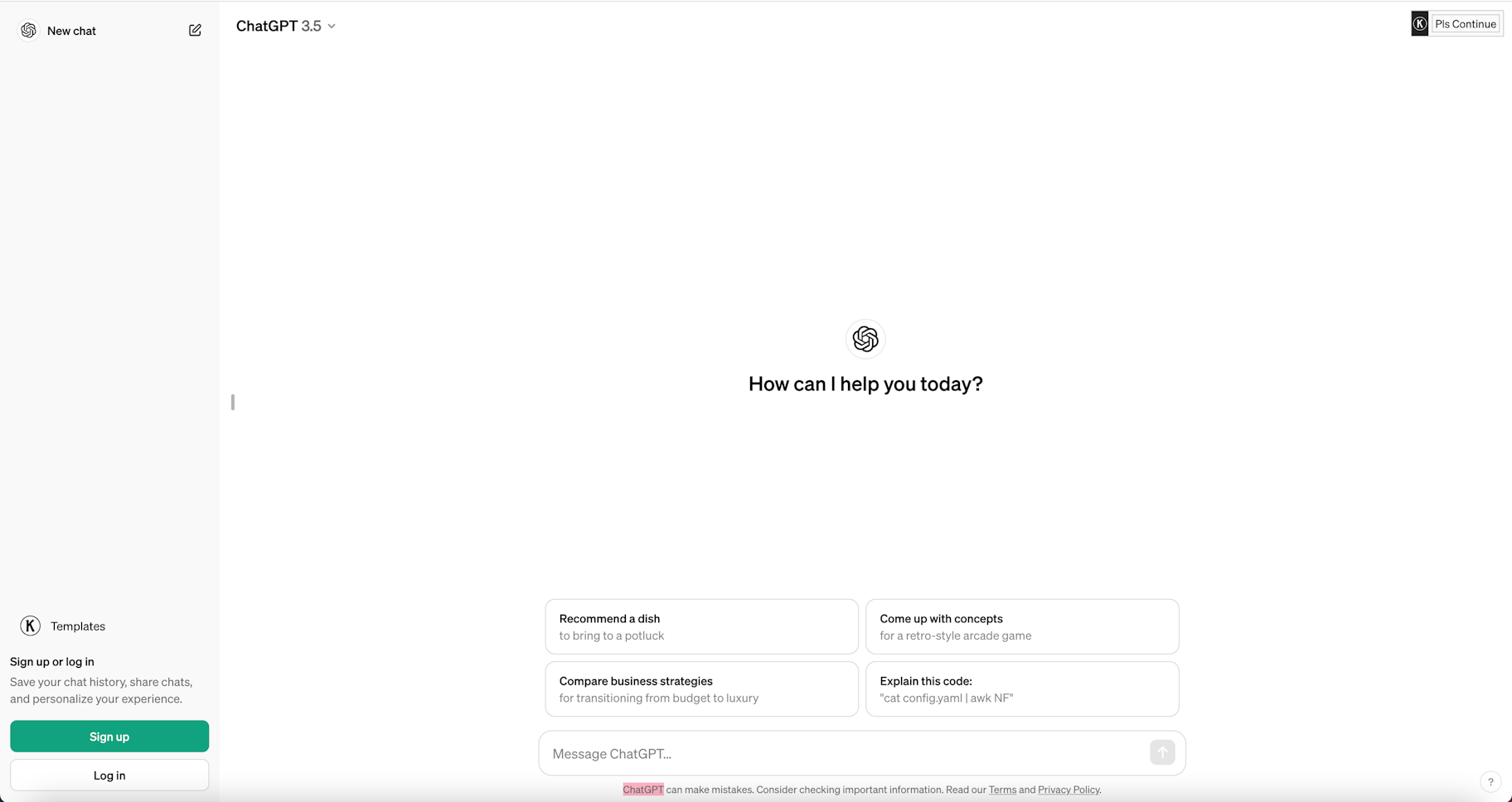
ChatGPT is a versatile tool capable of handling a broad range of tasks. You can use ChatGPT to draft customer service responses, create engaging social media posts, automate repetitive tasks, and generate insightful market research.
The developer OpenAI offers two versions of this chatbot: GPT-3.5 and GPT-4. OpenAI GPT-4 is the more advanced and accurate variant due to its training on a larger dataset. Those who opt for it also get access to an expanded selection of third-party integrations and plug-ins, further broadening the utility of their AI chatbot.
Features: Advanced search functions, customizable bot builder
Models: Free access to GPT-3.5, GPT-4 available with subscription
Cost: $20/month for GPT-4
Use cases: Content research, generation, coding, translation
2. Zapier chatbot
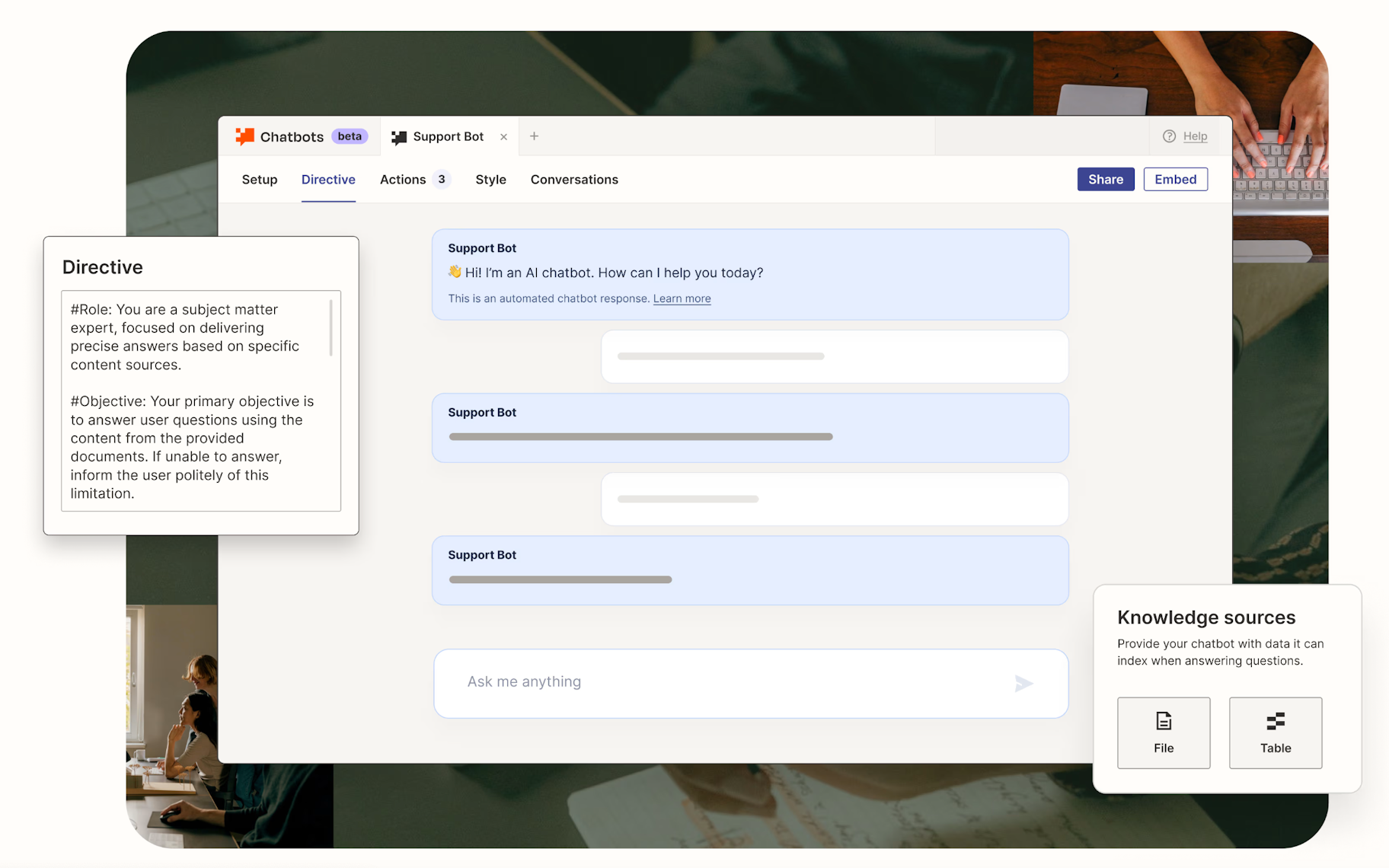
Zapier’s free chatbot tool enables you to leverage the power of GPT to build your own AI chatbot. The steps are simple:
- Give your chatbot a name
- Set a prompt or greeting
- Create a directive that describes the bot’s persona and knowledge boundaries
Zapier chatbots also lets you adjust the bot’s creativity level, customize its appearance, and train it on specific documents to serve as an informed knowledge source. Plus, the tool offers pre-made templates that allow you to deploy conversational AI chatbots for various purposes in minutes.
Features: Advanced branding, data source integration, OpenAI model connectivity for enhanced intelligence
Models: Free access to GPT-3.5; GPT-4 available with subscription
Cost: Base service is free, premium features and GPT-4 access are a paid add-on
Use cases: Instant answers from diverse sources, customer support automation, lead collection and qualification
3. Microsoft Copilot
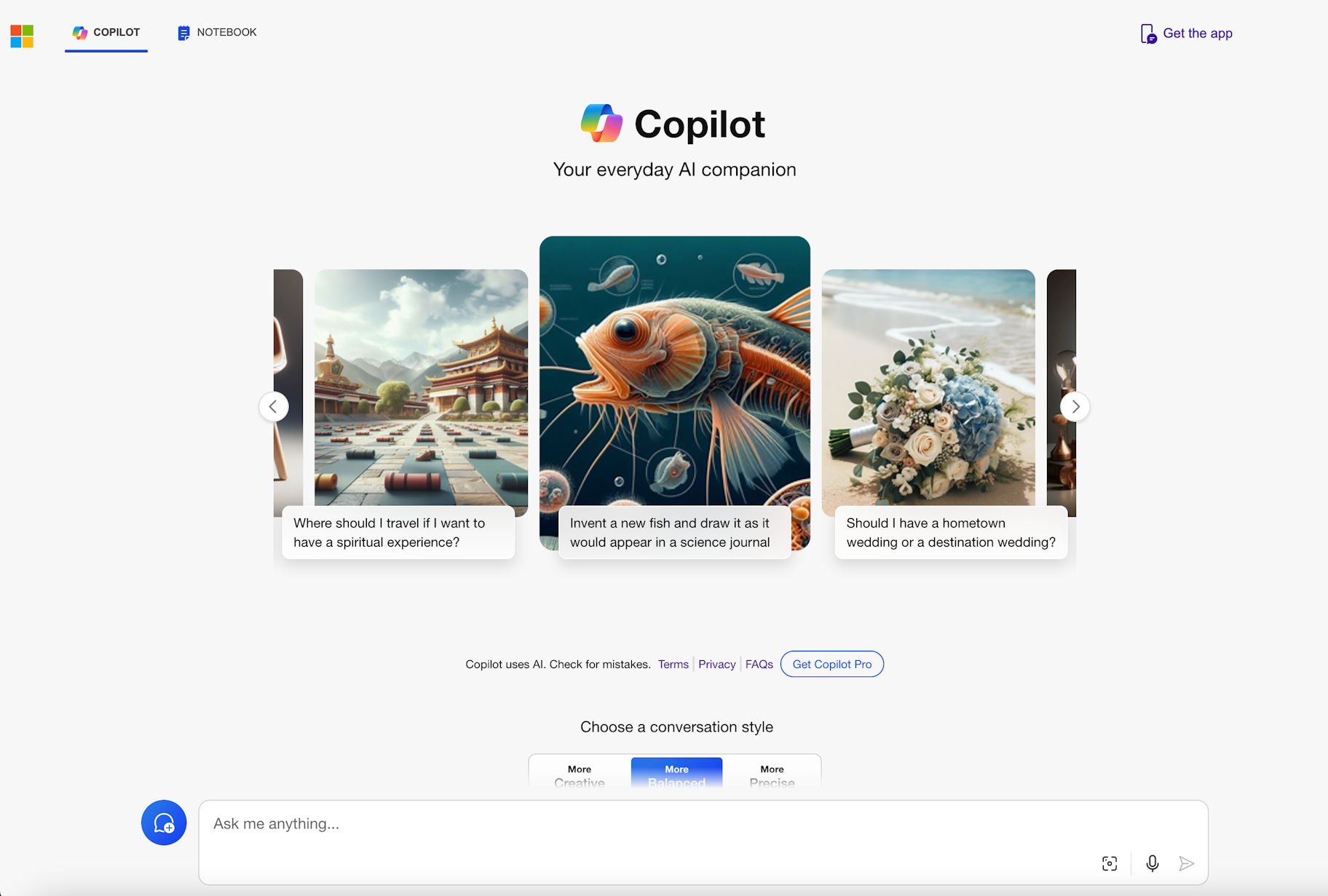
Powered by Microsoft Bing AI, Copilot is a conversational AI chatbot that provides human-like responses with links to original sources. You can use it to access current information, receive assistance with writing, solve complex problems, and generate images.
Microsoft integrates Copilot across its ecosystem, including Windows, Microsoft 365, and other specialized services. This means the bot can also assist with tasks within those programs. Plus, Copilot combines the power of LLMs with your Microsoft Graph data (including your emails, chats, calendar, documents, and more) to provide personalized suggestions and automate repetitive tasks.
Features: Visual search, image generation, complex search features
Models: Includes access to GPT-4 and OpenAI’s DALL-E 3 image AI tech
Cost: Free
Use cases: Content research, production, virtual assistant
4. Gemini
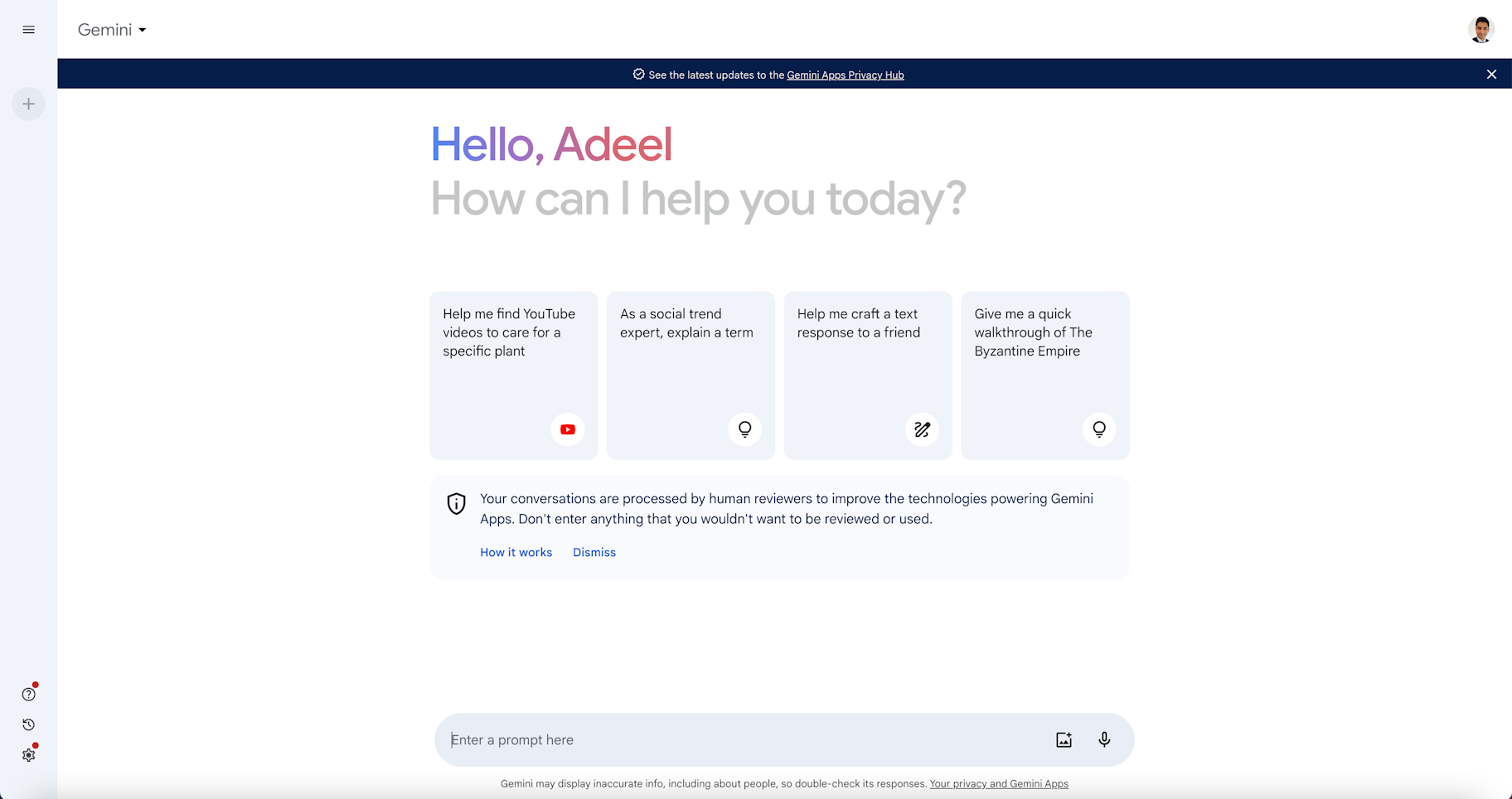
Gemini (formerly known as Google Bard) is Google’s conversational AI chatbot designed to rival ChatGPT. Its edge over ChatGPT lies in its ability to fetch real-time information from the web, since ChatGPT’s knowledge stops at 2021. Powered by Google PaLM 2, the most advanced version of Google’s large language model, Gemini executes tasks efficiently.
Gemini’s capabilities include drafting emails, generating content, translating languages, and performing research. Access is simple: just visit the Gemini website and sign into your Google account.
What sets Gemini apart is its flexibility in editing prompts post-submission and its provision of multiple drafts for each response, allowing you to choose the version that best fits your needs. Moreover, Gemini facilitates easy sharing by letting you export responses directly to Google Docs or as Gmail drafts.
Features: Text generation, Q&A interface, multilingual capabilities
Models: PaLM 2 only
Cost: Free
Use cases: Content research, summarization, translation, coding
5. Drift
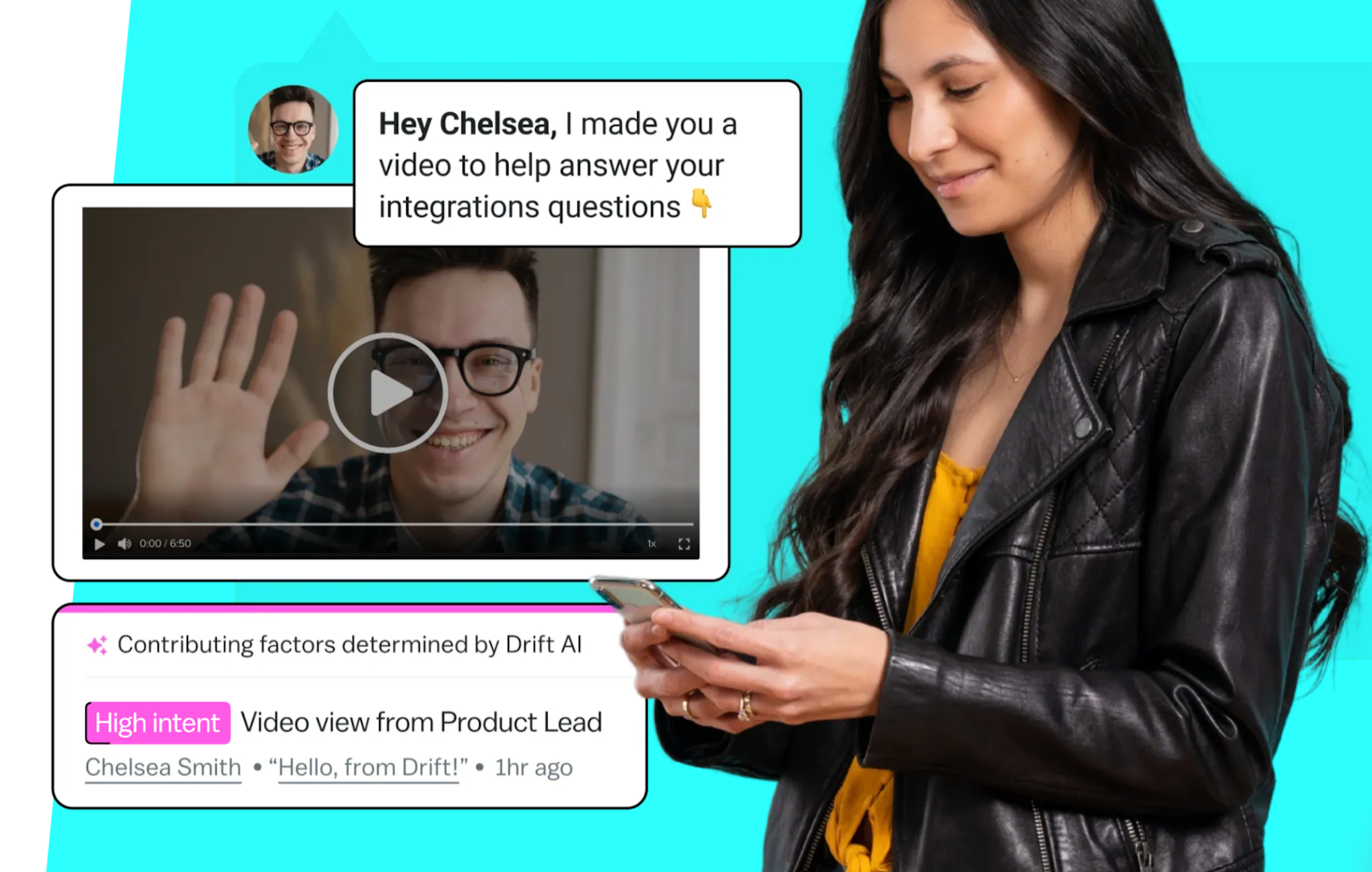
Drift is a conversational chatbot designed for B2B companies that need a simple, effective way to connect with target buyers. It leverages advanced AI to interpret open-ended questions, pinpoint user intent, and provide accurate, relevant responses or direct conversations to the right team.
This AI chatbot operates as a live chat tool using GPT technology. It crafts replies by drawing on the website’s content, marketing materials, and the context of the conversation. This way, each response is relevant and tailored to the user’s needs.
Features: Contextual conversation classification, meeting scheduling options
Models: Free access to GPT-3.5; GPT-4 available with a premium subscription
Cost: Base service is free, premium plans start at $2,500 per month
Use cases: Web personalization, target account engagement, ABM campaign optimization
6. ChatSpot
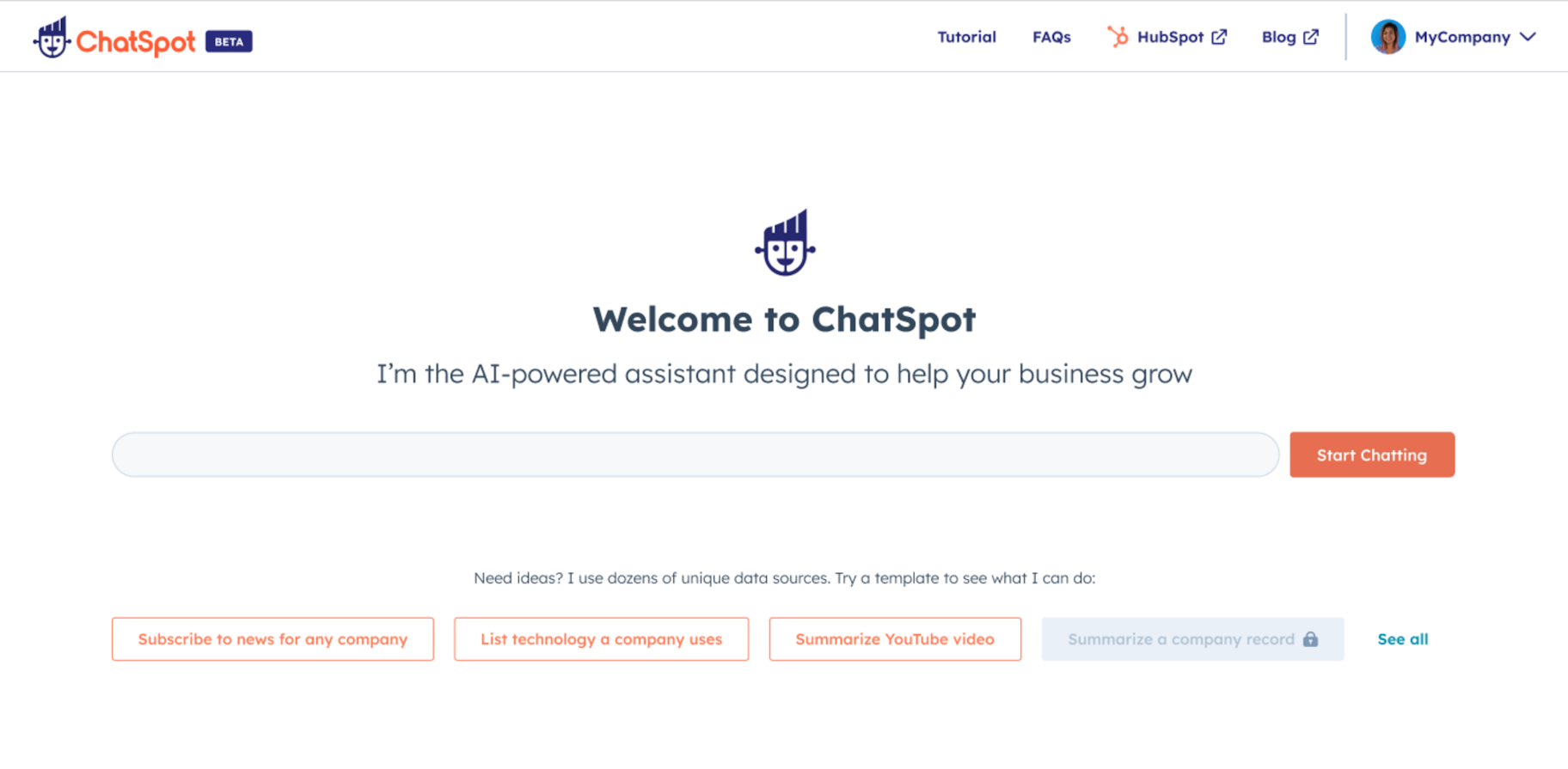
ChatSpot is a free AI chatbot from HubSpot, a cloud-based CRM platform. You don’t need to be a HubSpot user to access it. This virtual assistant can create content, research, and summarize information by using HubSpot’s knowledge bases.
If you use HubSpot and integrate it with Shopify, ChatSpot becomes even more powerful. It syncs customer and sales data from your store. This lets you group audiences by how they buy. You can also get reports on important sales metrics like average order value and abandoned cart recovery. Plus, you can automate ecommerce campaigns with this integration.
Features: Integrated content generation, sales prospecting
Models: GPT-3.5, GPT-4, and Dall-E
Cost: Free
Use cases: Content writing, prospecting, image generation
7. Jasper Chat
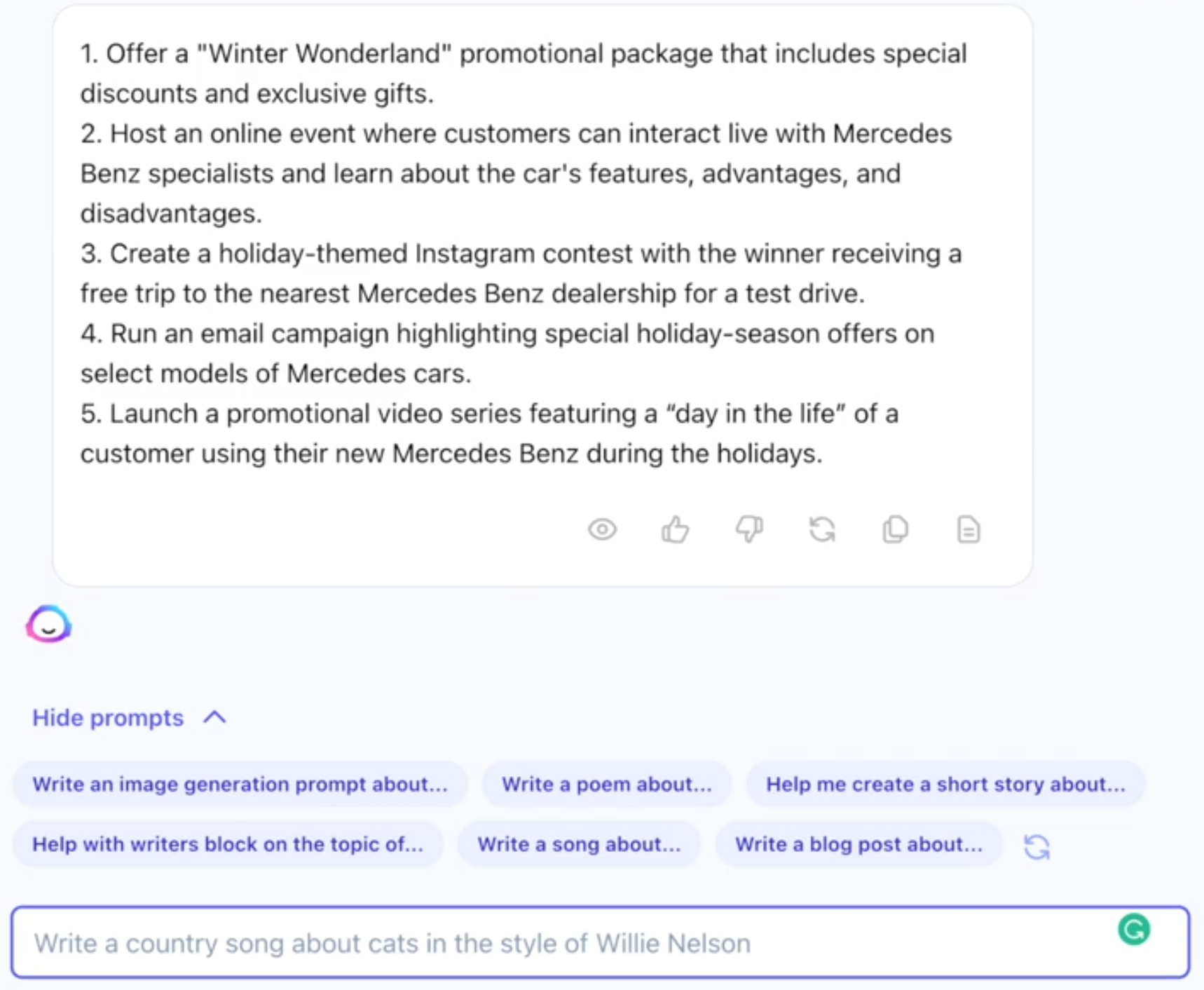
Jasper Chat is an AI writing assistant within the Jasper AI copywriting platform. It excels in generating content in more than 30 languages, summarizing reports and articles, brainstorming ideas, and providing feedback.
Unlike other AI chat tools, Jasper Chat provides enterprise-level security certifications and ensures users maintain ownership of their inputs and the bot-generated outputs. It includes a browser extension for easy access and offers versatile exporting options, including PDF, Word, and HTML formats.
Features: Content collaboration, Google docs integration, image generation
Models: Google’s models, Anthropic, and GPT-4
Cost: $39/month
Use cases: Content writing , translation, plagiarism checker
8. Pi
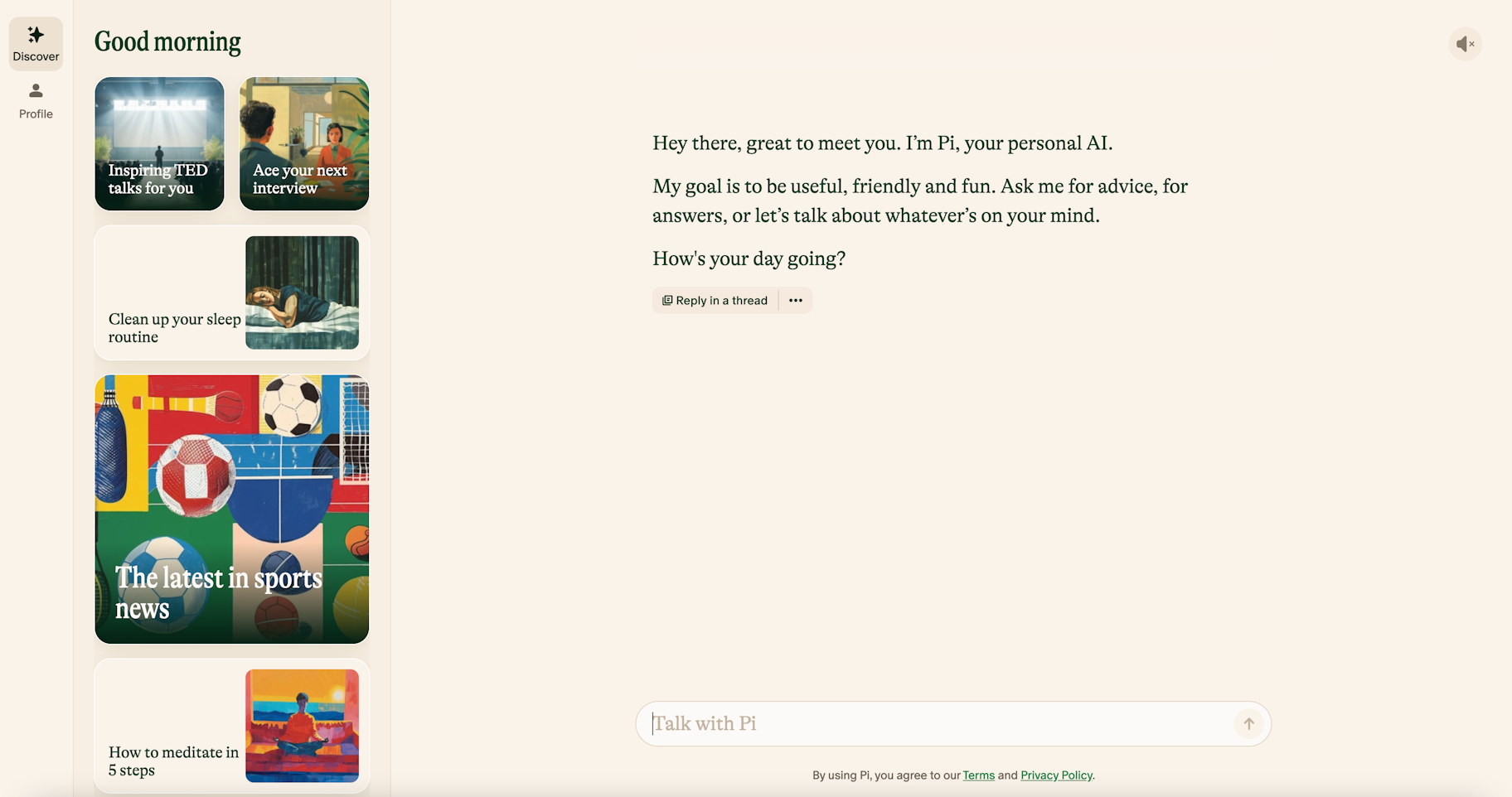
Pi is a unique generative AI chatbot designed for emotional support and perspective through friendly conversations. Unlike typical chatbots focused on tasks, Pi listens without judgment, aiming to make users feel understood by prioritizing companionship and engaging in natural dialogue.
Accessible through its website and popular messaging apps like Facebook, Instagram, iMessage, and WhatsApp, Pi offers easy and convenient ways to connect for anyone seeking support or a friendly chat, anytime and anywhere.
Features: Personalized responses, creative content generation, task management
Models: Inflection-2.5 LLM
Cost: Free
Use cases: Emotional support, perspective and advice, self-reflection
9. Chatfuel
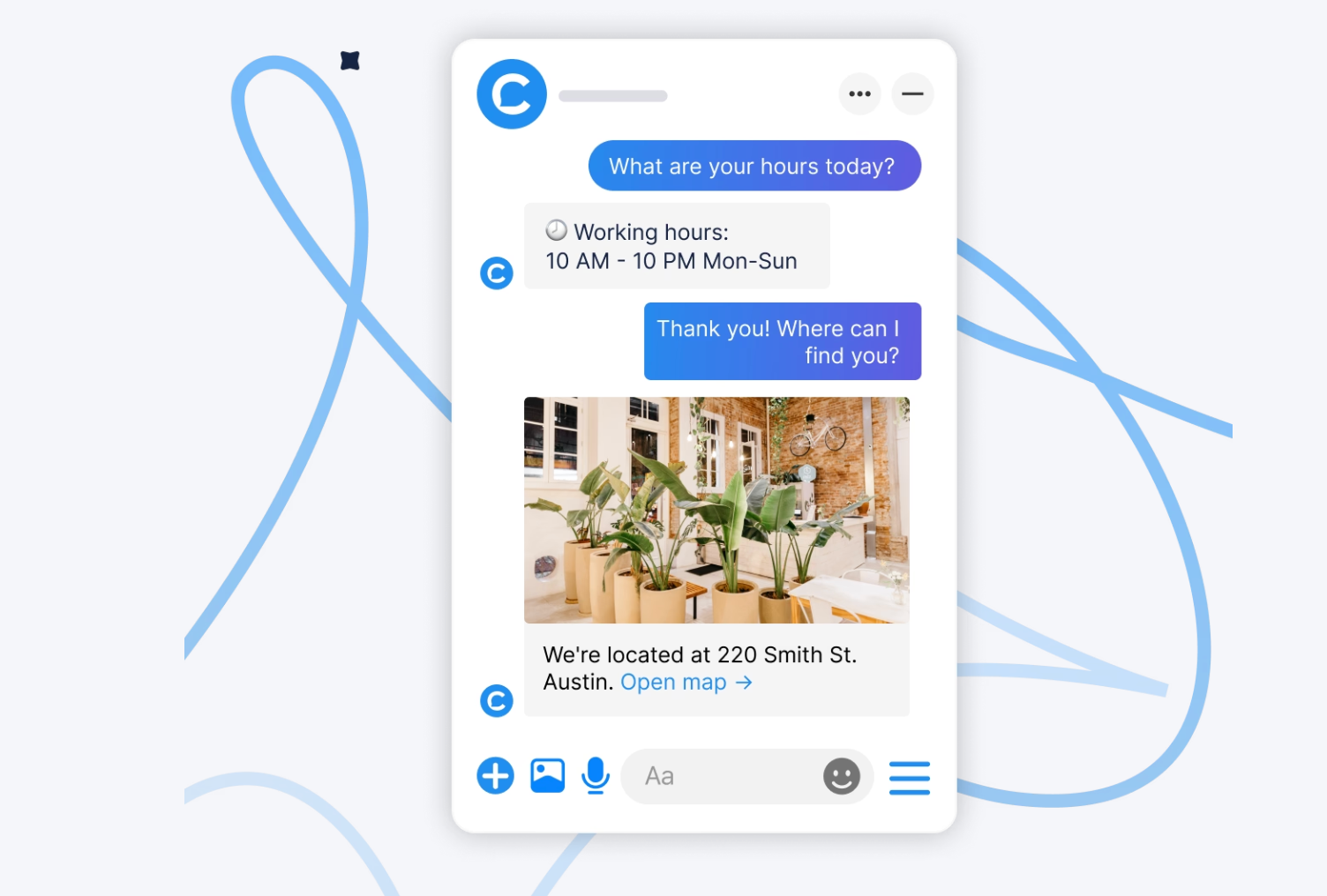
Chatfuel provides a simple solution for businesses to build their own chatbot. You can use it to create generative AI chatbots for WhatsApp, Facebook Messenger, Instagram, and your own sites.
Chatfuel comes with a user-friendly bot builder and templates that make setting up a bot quick. Additionally, Chatfuel integrates with business tools like Shopify to help users automate workflows like posting new item images on social media or updating inventory post-sale.
Features: No-code bot builder, templates, integrations
Models: GPT-4
Cost: Starts at $29/month
Use cases: Marketing, sales, customer support
7 tips for selecting an AI chatbot
If you’re considering using AI chatbots to support your ecommerce business, take note of the following tips:
1. Identify your goals
Before exploring your options, clearly define what you aim to achieve with an AI chatbot. Whether your focus is on enhancing customer service, boosting lead generation, or optimizing internal processes, having specific goals in mind will guide your search for the most suitable chatbot software tailored to your requirements.
2. Evaluate ease of use and setup
Some chatbots are ready to use out of the box with minimal setup, while others require technical expertise to customize and maintain. Determine your team’s ability to manage the chatbot and choose a solution that matches your technical capabilities and resources.
3. Consider total cost of ownership
The total cost of ownership (TCO) for artificial intelligence chatbots includes acquisition, setup, and ongoing maintenance expenses. Assess your available time, resources, and the potential return on investment (ROI) before committing. It’s essential to weigh these factors against the expected benefits and value the chatbot will bring to your organization.
4. Assess data privacy and security
Privacy and security are paramount when dealing with customer interactions. Ensure the chatbot platform respects user privacy, complies with data protection laws, and has robust security measures to protect sensitive information.
5. Check for necessary integrations
Your chatbot should easily integrate with existing business systems, such as CRM software or ecommerce platforms, to provide a smooth workflow and access to the information it needs to assist users effectively. Verify that the chatbot supports integrations with the tools you already use.
6. Ensure channel compatibility
Customers use a variety of digital touchpoints—ranging from websites to mobile apps and messaging platforms—and often switch between devices. Opt for omnichannel chatbots that recognize and provide a consistent experience to your customers across all these platforms.
7. Understand current limitations
When integrating AI chatbots, be aware they’re not perfect. They might struggle with understanding complex queries, show biases based on their training data, or generate responses that don’t always match your brand’s tone. Continuously monitor their performance and make necessary adjustments to maintain a high-quality interaction experience for your audience.
Chatting up success with genAI chatbots
Chatbots are defining the future of how businesses interact with customers. When picking an AI chatbot, focus on your specific needs, goals, and the chatbot’s functionality. What tasks do you need automated? How important is personalization in your customer interactions? Can the chatbot integrate easily with your current systems? Answers to these questions will direct you to the best AI chatbot for your business.
AI chatbots FAQ
Are AI chatbots safe to use?
AI chatbots are safe, but come with potential risks you need to be mindful of, including:
- Inaccurate or misleading information (also known as AI “hallucinations)
- Data and privacy concerns
- Bias
The best way to mitigate these risks is to use chatbots from reputable companies and read the privacy and data policies associated with the tools you use.
What are the types of chatbots?
There are three main types of chatbots:
- Menu-based chatbots: These chatbots present users with a series of buttons or menus to choose from. This design makes them easy to use but limits their output.
- Rules-based chatbots: These follow a set of predetermined rules to decide how to reply to what users say. They offer more flexibility than menu-based chatbots but still have restrictions on their responses.
- AI-powered chatbots: These use artificial intelligence to understand and answer user questions. They can provide many responses that feel more like talking to a human.



Want to learn more?
- Customer Engagement: What Is It and How to Master It
- Business Ethics: Key Principles and Tips for Implementation
- The Ultimate Guide to Experiential Marketing
- Omnichannel vs. Multichannel: A Detailed Comparison for Businesses
